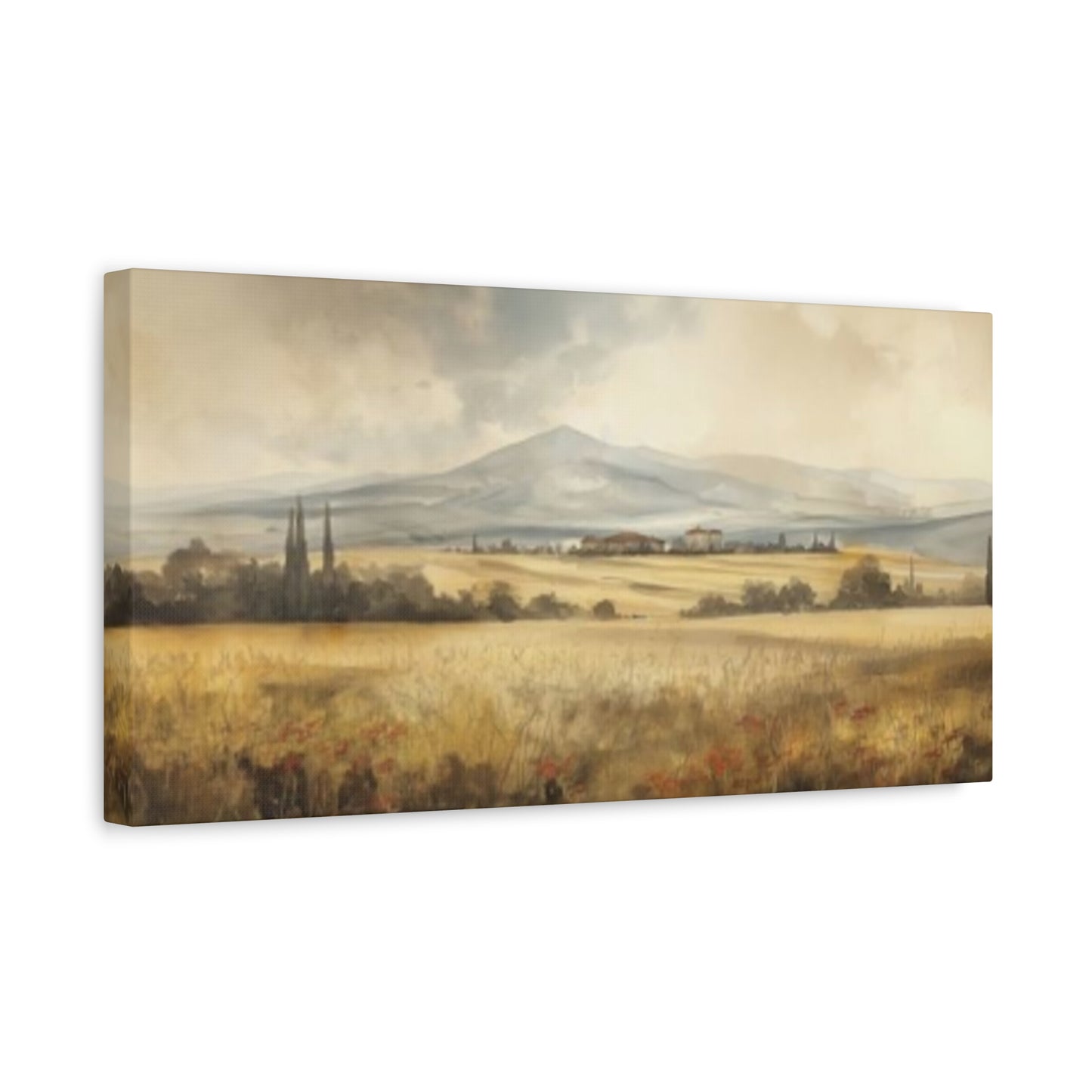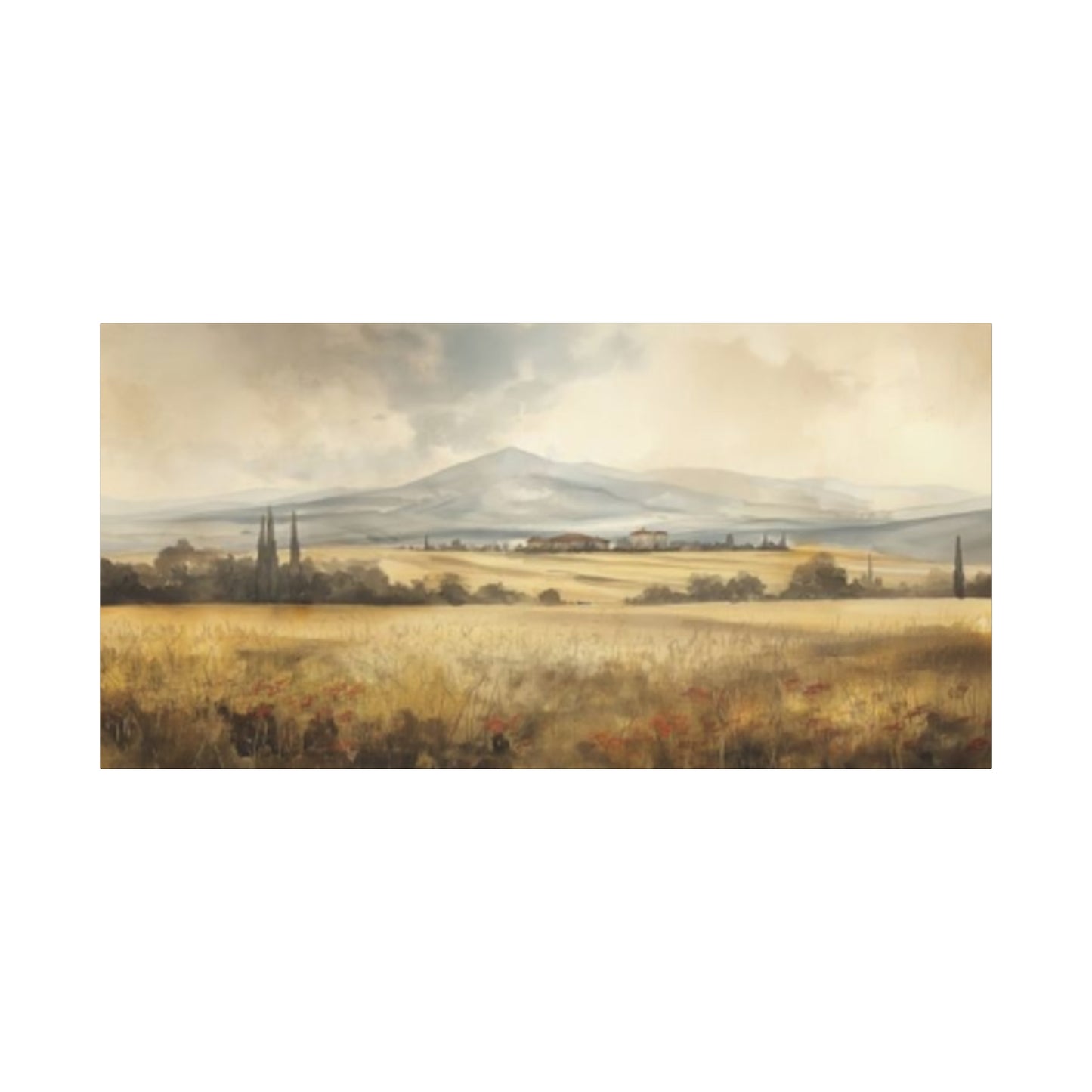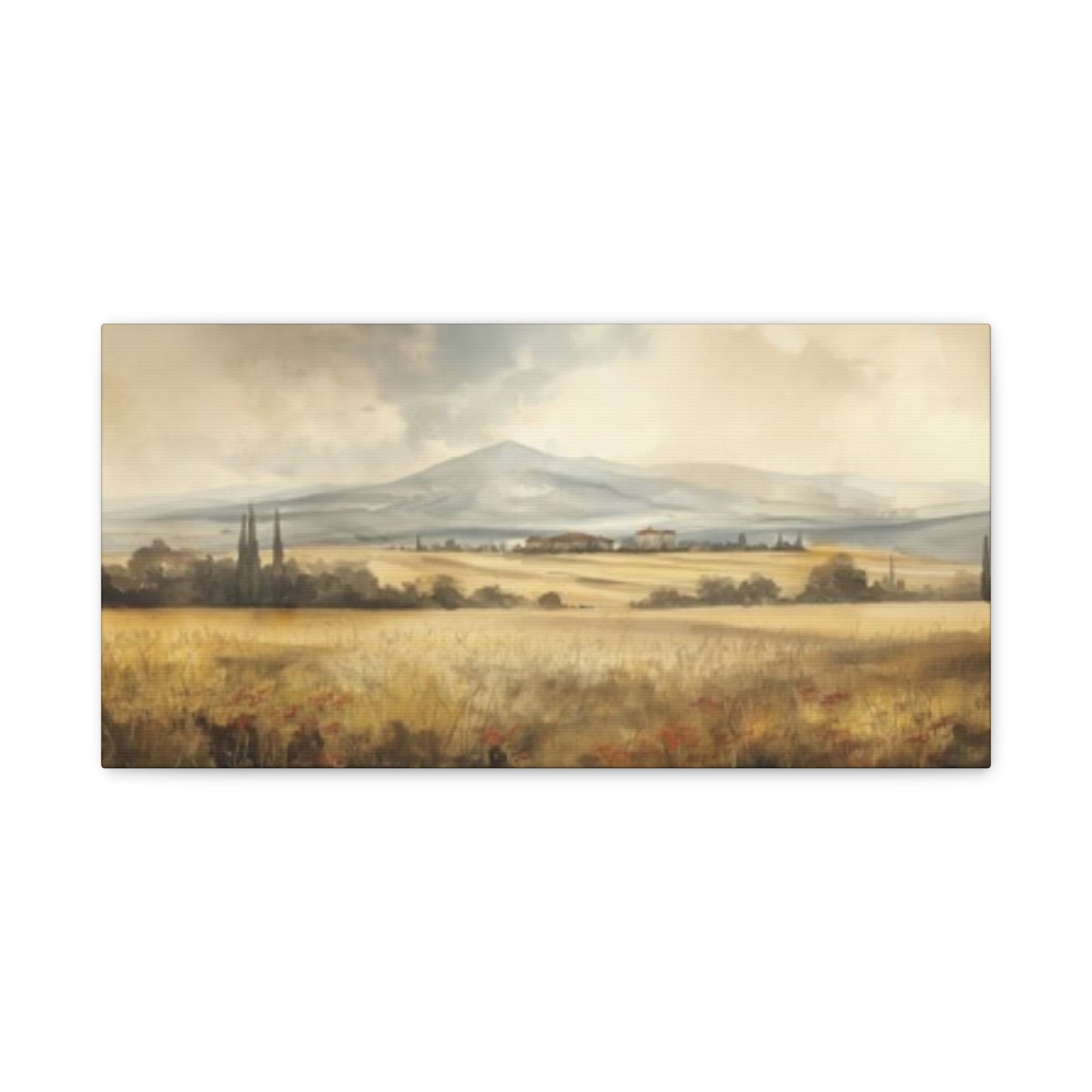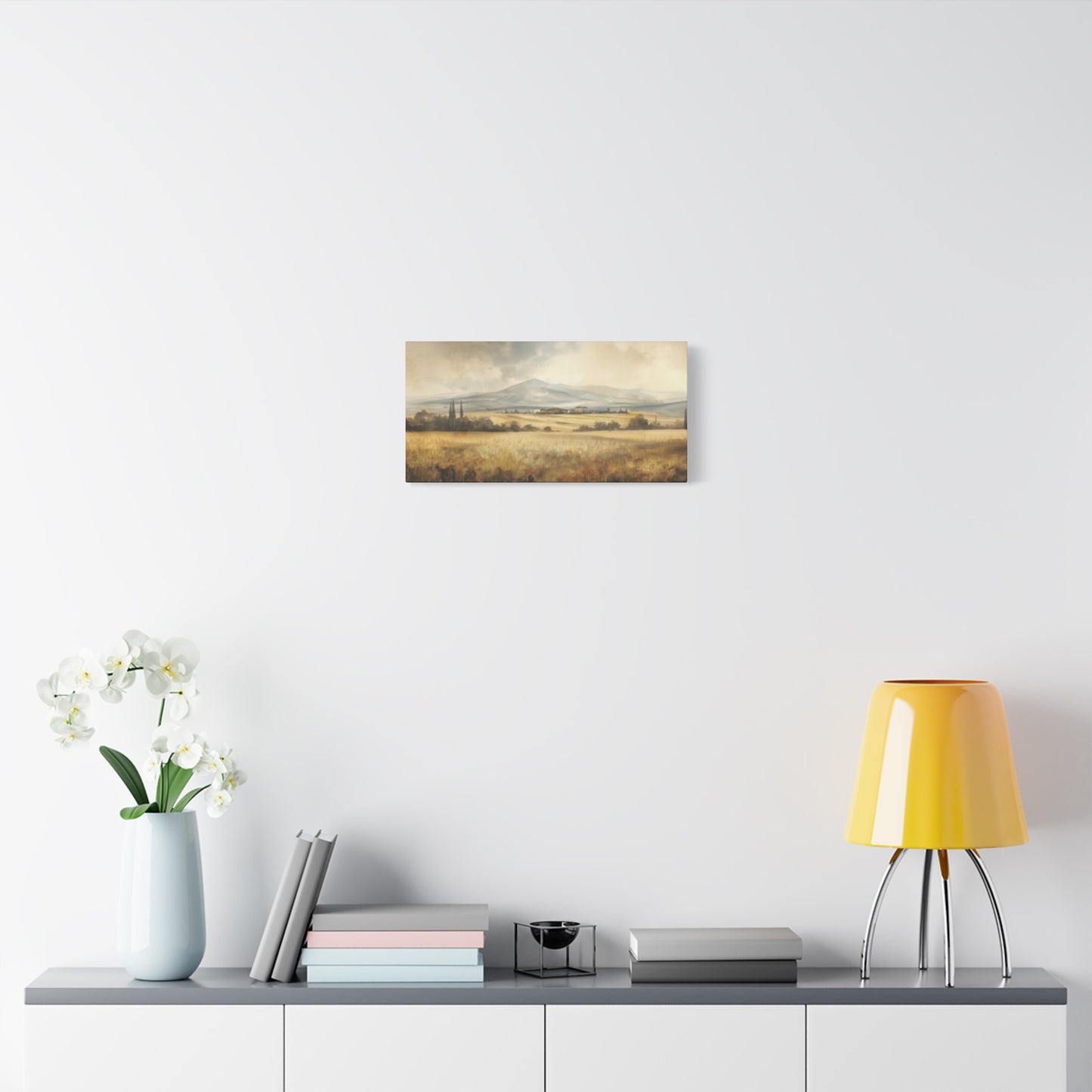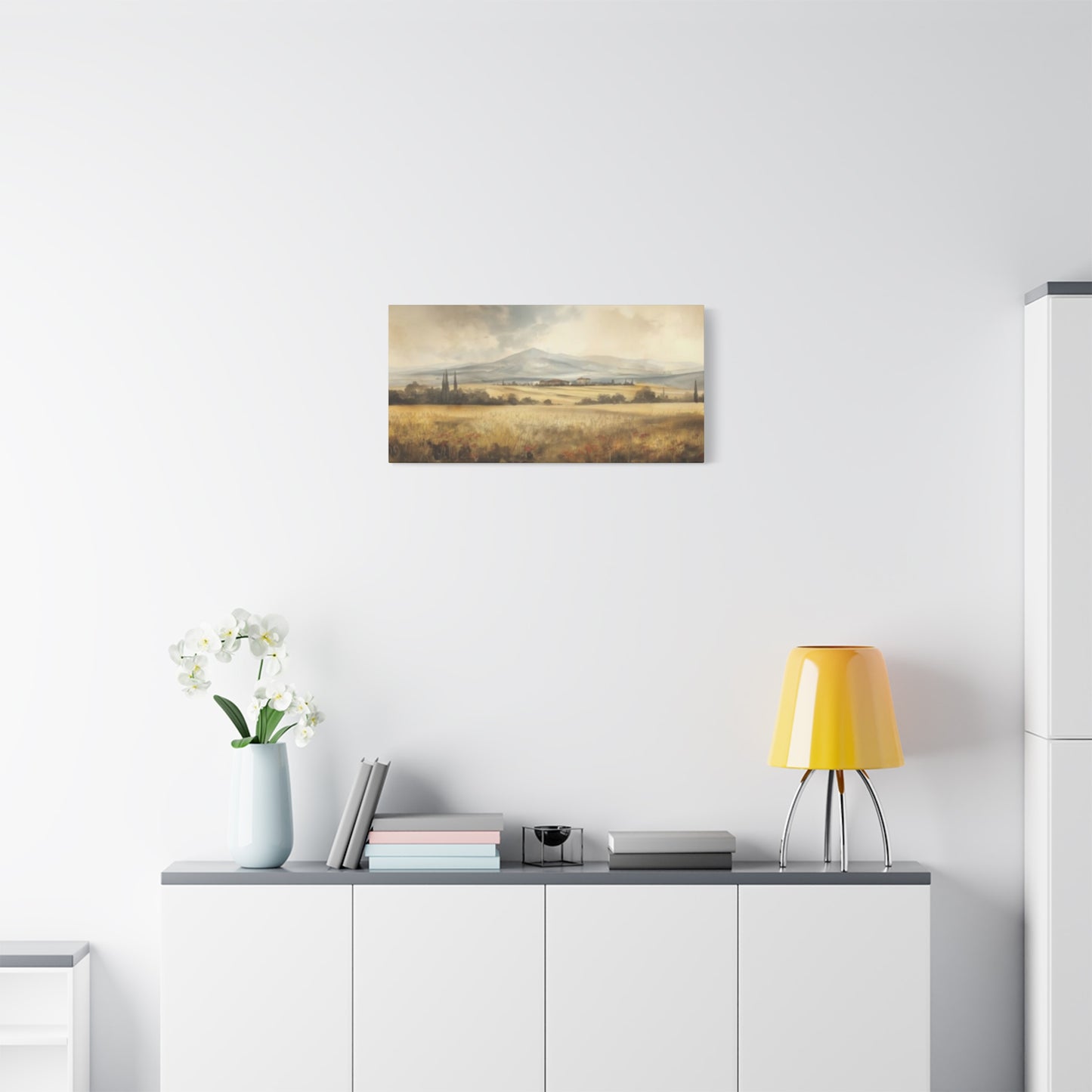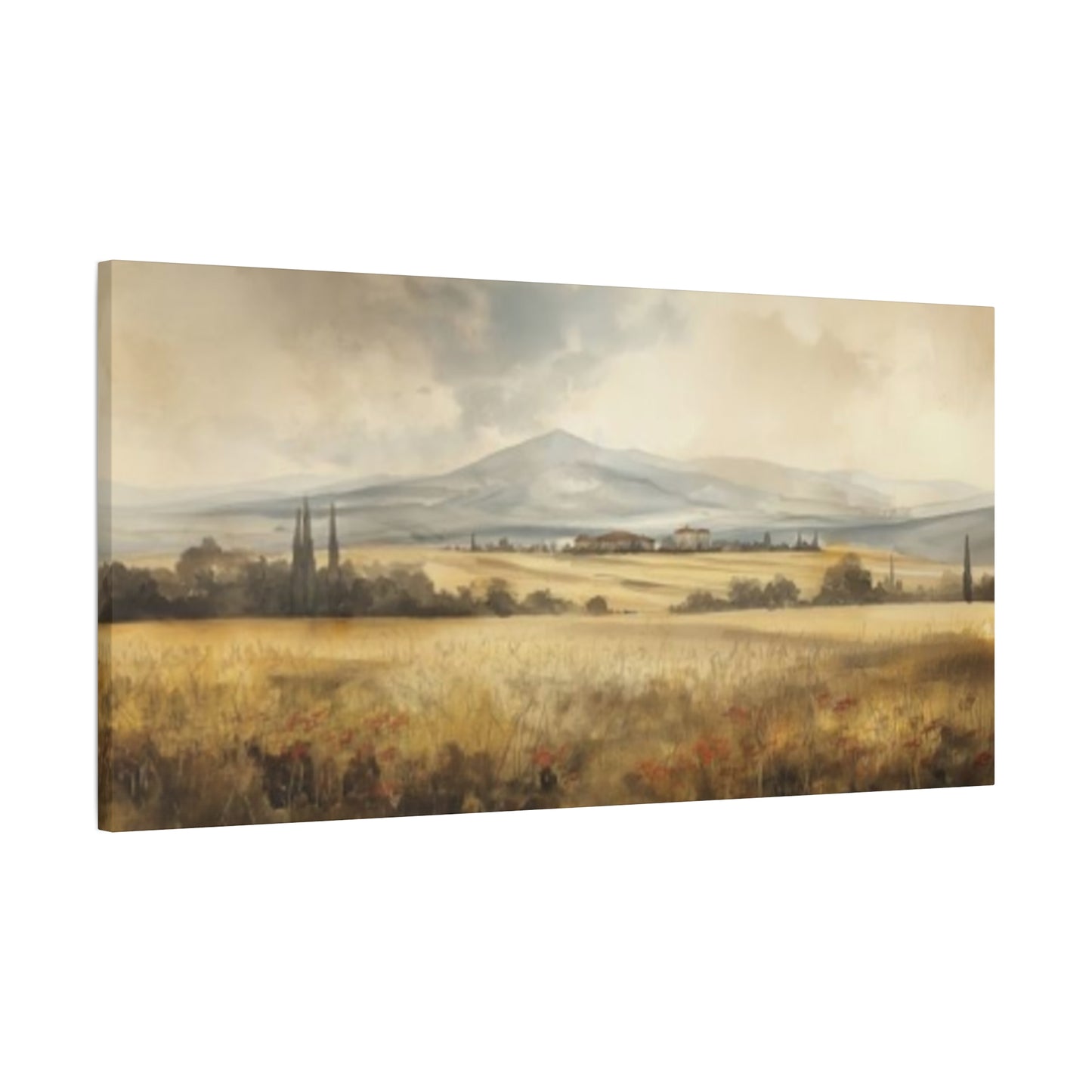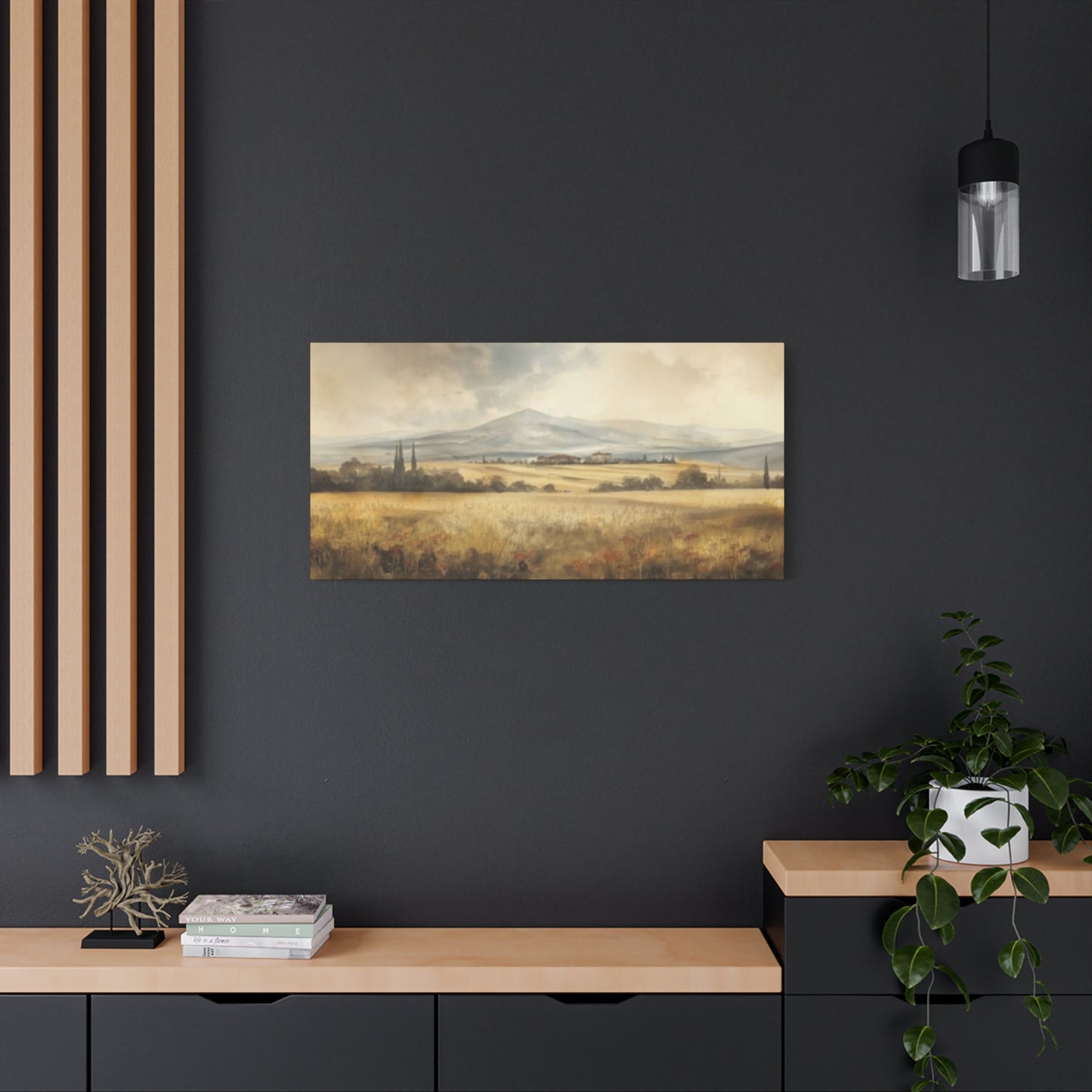Sunrise to Sunset: The Ever-Changing Beauty of Savanna Painting Panoramas Wall art
The allure of the African wilderness has captivated humanity for centuries, drawing us into its vast expanses of golden grasslands, dramatic sunsets, and magnificent creatures that roam freely across endless horizons. Today, homeowners and interior design enthusiasts are discovering innovative ways to capture this raw, untamed beauty through carefully curated wall décor that celebrates the majesty of the savanna ecosystem. These artistic representations offer more than mere decoration; they provide a window into one of Earth's most spectacular natural environments, allowing us to connect with the primal energy and serene grandeur of Africa's most iconic landscapes without leaving the comfort of our homes.
The growing popularity of savanna-themed artwork reflects a deeper cultural shift toward biophilic design principles, where natural elements are intentionally incorporated into indoor spaces to enhance well-being, reduce stress, and create environments that resonate with our innate connection to the natural world. Whether you're drawn to the powerful presence of elephants marching across dusty plains, the graceful silhouettes of giraffes against a crimson sunset, or the dramatic interplay of light and shadow across endless grasslands, there exists a wealth of artistic interpretations that can transform any room into a sanctuary of natural beauty.
This comprehensive exploration delves into the multifaceted world of African savanna wall décor, examining everything from artistic styles and material choices to placement strategies and the emotional impact these pieces can have on your living environment. We'll journey through various representations of this magnificent ecosystem, understanding how different artistic approaches can evoke distinct moods and complement diverse interior design aesthetics. Whether you're furnishing a contemporary urban apartment, a rustic country home, or a professional office space, the timeless appeal of savanna-inspired artwork offers versatile solutions that bridge the gap between civilization and wilderness.
African Savanna Wildlife Wall Décor Prints
The realm of African savanna wildlife wall décor prints encompasses an extraordinary diversity of artistic expressions that celebrate the continent's most recognizable inhabitants. These prints capture moments of raw power, tender family interactions, and the daily drama of survival that unfolds across the grasslands. From the mighty lion surveying his domain to the gentle coexistence of various species at watering holes, these artworks document the intricate web of life that defines the savanna ecosystem.
Contemporary print technology has revolutionized how we experience wildlife photography and illustrations, allowing for unprecedented detail reproduction that brings every whisker, feather, and scale into sharp focus. Museum-quality printing techniques preserve the subtle color gradations of a kudu's coat, the texture of weathered elephant skin, and the piercing intensity of a leopard's gaze. These technological advances mean that even affordable prints can deliver visual impact previously reserved for original paintings or professional gallery prints.
The subject matter available in savanna wildlife prints spans the entire spectrum of African fauna. Collectors can choose from dramatic predator portraits showcasing lions, cheetahs, and leopards in moments of intense focus or relaxation. Herbivore enthusiasts might gravitate toward images of elephant families demonstrating complex social bonds, zebra herds creating mesmerizing patterns with their stripes, or the comical expressions of warthogs going about their daily routines. Bird lovers aren't forgotten either, with spectacular representations of secretary birds, crowned cranes, and the massive ground-dwelling hornbills that add avian diversity to the landscape.
What makes these prints particularly compelling is their ability to freeze moments that wildlife photographers might spend weeks or even months waiting to capture. A lioness mid-leap during a hunt, the split-second interaction between a crocodile and its prey, or the peaceful coexistence of different species sharing resources during the dry season—these are windows into behaviors and moments that most people will never witness firsthand. Each print tells a story, inviting viewers to imagine the sounds, smells, and sensations of being present in that exact moment on the African plains.
The educational value of wildlife prints shouldn't be underestimated, especially in homes with children or educational institutions. These images spark curiosity about animal behavior, ecological relationships, and conservation challenges. A print depicting a rhinoceros can launch conversations about endangered species protection, while images of predator-prey interactions illustrate fundamental ecological concepts in visually engaging ways. This educational dimension adds depth to their decorative function, making them investments in both aesthetic appeal and intellectual enrichment.
Material selection for wildlife prints significantly impacts their longevity and visual presentation. Traditional paper prints offer crisp detail and affordability, making them excellent choices for frequently rotated gallery walls or temporary displays. Metal prints provide contemporary appeal with their vibrant color reproduction and inherent durability, particularly suitable for modern interiors or high-traffic areas where traditional framed prints might be vulnerable. Acrylic prints deliver depth and luminosity that make wildlife subjects appear almost three-dimensional, with light passing through the material to create an ethereal glow around the subject.
The emotional resonance of wildlife prints varies considerably based on the specific moment captured. Action shots featuring predators in full pursuit generate excitement and energy, making them ideal for spaces where motivation and dynamism are desired, such as home gyms or creative workspaces. Conversely, portraits of animals in peaceful repose—elephants touching trunks in greeting, or a leopard lounging in an acacia tree—create calming atmospheres perfect for bedrooms, meditation spaces, or areas dedicated to relaxation and reflection.
Composition choices within wildlife prints also influence their decorative impact. Close-up portraits that fill the frame with an animal's face create intimate connections between viewer and subject, particularly effective in smaller rooms where they become focal points without overwhelming the space. Environmental portraits showing animals within their habitat context provide narrative depth and work beautifully in larger spaces where viewers can appreciate both the individual creature and its surrounding landscape. Group compositions featuring multiple species or family units tell richer ecological stories and suit spaces where conversation and social interaction occur.
Majestic Savanna Canvas Wall Art
Majestic savanna canvas wall art represents the intersection of fine art tradition and contemporary decorating sensibilities, offering substantial presence that transforms walls into portals to Africa's most breathtaking vistas. The canvas medium itself carries inherent warmth and texture that distinguishes it from other print formats, with its slight weave visible beneath the image adding tactile dimension that engages multiple senses. This traditional artistic foundation lends gravitas and authenticity to savanna scenes, creating the impression of owning an original work rather than a reproduction.
The term majestic appropriately describes the emotional tenor these pieces evoke—images selected for canvas treatment typically showcase the grandeur and scale of the African landscape in ways that command attention and inspire awe. Expansive vistas stretching to distant horizons, dramatic weather phenomena sweeping across the plains, and the noble bearing of apex predators all receive elevated treatment when rendered on canvas. The slightly muted, natural appearance of canvas compared to glossy prints actually enhances the timeless quality of these scenes, making them feel like treasured artifacts from an explorer's collection rather than contemporary decorative items.
Canvas construction offers practical advantages that extend beyond aesthetics. The gallery-wrap technique, where the image continues around the frame's edges, eliminates the need for traditional framing, creating a modern, minimalist presentation that suits contemporary interiors while reducing overall cost and installation complexity. This frameless approach also allows the artwork itself to remain the focal point without competing visual elements drawing attention away from the savanna scene. For those who prefer more traditional presentations, canvas prints readily accept framing, with options ranging from simple floating frames that add subtle definition to ornate carved wood frames that enhance the classical, expedition-era aesthetic.
The durability of canvas makes it particularly suitable for homes with children, pets, or high-traffic areas where more delicate art forms might be at risk. Unlike paper prints behind glass that can shatter or acrylic pieces that might crack under impact, canvas construction provides resilience against everyday accidents while maintaining its visual integrity. The material also resists warping and deterioration when properly treated, with UV-protective coatings ensuring that the vibrant oranges of sunset skies and the rich earth tones of savanna soils retain their intensity for decades rather than fading into washed-out shadows of their original glory.
Sizing options for canvas art accommodate virtually any architectural situation, from intimate accent pieces measuring mere inches across to wall-dominating installations spanning ten feet or more. Large-scale canvas pieces create particularly dramatic effects in spaces with high ceilings or extensive wall expanses, where smaller artworks might appear lost or inadequate. A properly sized majestic savanna scene can anchor an entire room's design scheme, establishing color palettes, setting emotional tones, and providing the visual weight necessary to balance furniture arrangements and architectural features.
The collaborative relationship between canvas texture and savanna imagery deserves special attention. The slight surface irregularity inherent to canvas weave actually enhances the perception of natural textures within the image—grassland vegetation appears more tangibly tactile, animal fur seems to have genuine depth, and atmospheric effects like dust clouds or morning mist gain an almost palpable quality. This synergy between medium and subject matter creates viewing experiences that transcend simple visual appreciation, engaging imagination in ways that smoother, more clinically perfect reproductions sometimes cannot.
Color reproduction on canvas follows different principles than other media, with pigments slightly absorbed into the fabric rather than sitting entirely on the surface. This characteristic produces colors that appear more organic and integrated, particularly beneficial for earth-toned savanna scenes where authenticity matters more than hyper-saturated impact. The golden yellows of dried grasses, the dusty browns of dry-season landscapes, and the subtle variations in animal coat colors all benefit from canvas's naturalistic color rendering, creating cohesive compositions that feel genuine rather than artificially enhanced.
Artistic styles represented in majestic savanna canvas art range from photorealistic reproductions of wildlife photography to interpretive paintings where artists emphasize emotional content over documentary accuracy. Photorealistic approaches appeal to those seeking authentic representations of actual savanna scenes, complete with accurate animal proportions, botanically correct vegetation, and geographically specific landscape features. These pieces satisfy our desire for genuine connection with real places and creatures, offering educational value alongside their decorative function.
Safari Landscape Canvas Wall Prints
Safari landscape canvas wall prints shift focus from individual wildlife subjects to the environments that support them, celebrating the dramatic topography, varied ecosystems, and atmospheric conditions that define the African savanna experience. These compositions prioritize spatial relationships, light quality, and the interplay between land and sky that creates the savanna's distinctive character. Where wildlife-focused prints zoom in on specific creatures, landscape pieces zoom out to reveal the grand theater where nature's dramas unfold daily.
The safari landscape genre encompasses remarkable diversity within its general category. Some pieces capture the classic savanna archetype—flat or gently rolling grasslands extending to the horizon, punctuated by the iconic silhouettes of acacia trees whose distinctive umbrella-shaped canopies have become visual shorthand for Africa itself. These compositions often emphasize horizontal lines and vast open spaces, creating a sense of expansiveness and freedom that can make even modest-sized rooms feel more spacious and less confined.
Other landscape interpretations highlight the topographical variety that actually characterizes many savanna regions. Rocky outcroppings rising from grasslands create dramatic vertical elements that add visual interest and compositional structure. Distant mountain ranges provide atmospheric perspective, their blue-hazed forms suggesting depths and distances that pull the eye into the image. River valleys cutting through plains introduce curves and organic lines that contrast with the typical horizontality of grassland vistas, while also suggesting the life-giving water sources around which all savanna existence revolves.
Seasonal variations offer entirely different landscape moods worthy of artistic exploration. The lush green expanses of the wet season, when rain transforms dusty plains into temporary gardens of wildflowers and fresh grass, present a savanna very different from popular imagination. These verdant interpretations work beautifully in spaces seeking freshness and vitality, offering an optimistic, life-affirming energy. Conversely, dry season landscapes with their golden and brown palettes, bare trees, and dust-hazed horizons convey endurance, patience, and the quiet drama of survival during challenging times—themes that resonate in professional or contemplative spaces.
Time of day dramatically influences landscape character, and artists carefully select timing to achieve specific effects. Midday scenes with harsh overhead light and minimal shadows create stark, documentary realism that emphasizes the raw, unromanticized reality of savanna environments. These pieces suit modern, minimalist interiors where honesty and authenticity trump decorative softness. Early morning landscapes bathed in cool blue light suggest tranquility and new beginnings, appropriate for bedrooms or meditation spaces. Late afternoon's golden hour produces warm, inviting scenes with long shadows and glowing light that work universally across most interior styles.
Weather conditions add another layer of dramatic possibility to safari landscapes. Storm clouds gathering over distant plains create tension and visual drama through contrasting light and dark areas, with shafts of sunlight breaking through cloud cover to spotlight specific landscape features. These dynamic compositions generate visual excitement and work particularly well in spaces where energy and activity are desired. Post-storm scenes featuring dramatic cloud formations and fresh-washed light deliver a sense of renewal and clarity ideal for creative workspaces or areas dedicated to fresh starts and new projects.
The absence or presence of wildlife within landscape compositions significantly affects their character and viewer engagement. Pure landscapes without visible animals emphasize the environment itself, allowing appreciation of geological features, vegetation patterns, and atmospheric phenomena without the distraction of recognizable creatures. These pieces appeal to design-focused individuals who appreciate abstract qualities like color relationships, compositional balance, and tonal harmonies. Including animals as small-scale elements within larger landscape contexts provides narrative interest and scale reference while maintaining landscape primacy—a herd of wildebeest appearing as distant dots conveys vastness more effectively than any empty plain, while also suggesting the natural processes and seasonal migrations that define savanna ecology.
Panoramic Savanna Painting Canvas Art
Panoramic savanna painting canvas art exploits horizontal formats to capture the essence of endless horizons that define the African plains experience. These elongated compositions mirror the actual visual experience of standing on the savanna and slowly scanning from left to right, taking in the full sweep of landscape that extends beyond normal human vision's field of view. The panoramic format creates unique decorative opportunities while presenting specific compositional challenges that skilled artists transform into strengths rather than limitations.
The aspect ratios employed in panoramic art typically exceed standard photographic or canvas proportions significantly, often reaching ratios of three-to-one, four-to-one, or even more extreme elongations. These unusual dimensions create striking visual statements that distinguish themselves immediately from conventional rectangular artworks. In architectural terms, panoramic pieces emphasize horizontal lines that can visually widen narrow rooms, lower perceived ceiling heights in uncomfortably tall spaces, or tie together disparate furniture groupings through their unifying horizontal sweep.
Compositional approaches to panoramic savanna paintings require careful consideration of how visual interest distributes across the extended horizontal expanse. Simple centering of focal points often fails in panoramic formats, creating dead zones at the edges that weaken overall impact. Successful panoramic compositions employ several strategies: distributed interest where multiple focal points appear at intervals across the canvas, creating a rhythmic visual journey from left to right; progressive narrative where the scene tells a story that unfolds spatially across the width; or dynamic asymmetry where major elements deliberately occupy off-center positions, creating tension and visual interest through imbalance.
The painted interpretation distinguishes these pieces from photographic panoramas, allowing artists greater freedom to emphasize, minimize, or reimagine elements according to aesthetic intent rather than photographic reality. Painters can exaggerate the dramatic qualities of sunset colors, simplify complex vegetation patterns into readable shapes, or adjust scale relationships between foreground and background elements to strengthen compositional impact. This artistic license results in images that often feel more emotionally resonant than strictly accurate photographs, capturing the feeling of experiencing the savanna rather than its documentary appearance.
Various painting styles find expression in panoramic savanna art. Realistic oil painting techniques render landscapes with rich color depth and subtle tonal variations that reward close examination while also reading clearly from across the room. Impressionistic approaches emphasize light quality and atmospheric effects through looser brushwork and color relationships, creating dreamlike interpretations that suggest rather than precisely describe landscape features. Contemporary abstract-leaning styles reduce savanna elements to essential shapes and colors, creating sophisticated decorative pieces that function as both landscape representations and abstract color field paintings.
The scale of panoramic art deserves special consideration, as these pieces typically work best when sized generously. A panoramic canvas measuring six feet wide or more creates genuine visual impact that justifies its unusual proportions, while smaller panoramic pieces sometimes appear awkwardly elongated rather than dramatically horizontal. When appropriately scaled, panoramic savanna paintings can serve as room-defining features that establish entire decorating schemes, with their colors, mood, and subject matter providing direction for complementary furnishings, textiles, and accessories.
Placement challenges and opportunities unique to panoramic formats require thoughtful planning. These pieces work exceptionally well above low, horizontal furniture like sofas, credenzas, or beds, where their proportions echo and complement the furniture's linear quality. They excel in hallways or corridors where wall height is limited but horizontal space is available. Panoramic art can visually tie together corner arrangements or span the space between windows, creating continuity across interrupted wall surfaces. However, they prove less suitable for narrow wall segments between doors or in small powder rooms where their length exceeds available space.
Lighting considerations become crucial with panoramic savanna paintings, as even illumination across the entire width prevents the edges from disappearing into shadow while maintaining focus on the center. Track lighting, picture lights with extended illumination zones, or multiple accent lights positioned to overlap their coverage all work well. Natural lighting from windows requires attention to prevent glare on certain sections while leaving others adequately lit, sometimes necessitating adjustable window treatments that can modulate light throughout the day.
Wildlife in Savanna Wall Art Canvas
Wildlife in savanna wall art canvas emphasizes the integration of animal subjects within their environmental context, creating compositions that honor both creature and habitat equally. Unlike pure wildlife portraits that isolate subjects against neutral backgrounds, these pieces show animals engaged with their surroundings—grazing, hunting, resting, or traveling through recognizable savanna landscapes. This environmental integration provides richer narrative content and educational value while creating more complex, layered compositions that reward extended viewing.
The relationship between figure and ground in these compositions requires careful artistic balance. Too much emphasis on the animal reduces the landscape to mere backdrop, losing the essential context that makes these scenes specifically about savanna wildlife rather than animals generally. Conversely, overwhelming landscape presence can diminish the wildlife to inconsequential detail, failing to showcase the magnificent creatures that make the savanna ecosystem fascinating. Skilled artists find the sweet spot where both elements receive appropriate attention, creating unified compositions where neither animal nor environment dominates inappropriately.
Behavioral context adds significant interest to wildlife-in-habitat pieces. An elephant shown stripping bark from an acacia tree illustrates both feeding behavior and the complex ecological relationships between herbivores and vegetation, where elephants simultaneously consume and shape plant communities. Lions resting in the shade of a rocky outcropping demonstrate thermoregulation strategies while also suggesting the territorial importance of elevated observation points. Wildebeest crossing a river capture the drama of seasonal migrations while highlighting the water features that structure savanna geography and ecology.
Multiple species compositions create particularly rich narrative possibilities within wildlife-in-habitat art. Interactions between different animals—zebras and wildebeest grazing together, oxpeckers riding on buffalo backs, or predator species observing potential prey—illustrate the complex social and ecological networks that characterize biodiverse ecosystems. These multi-species scenes appeal to viewers interested in ecological relationships rather than single-species appreciation, offering ongoing discovery of new details and relationship nuances with repeated viewing.
Scale relationships between animals and their environment communicate important information while also creating compositional opportunities. Showing elephants as massive presences dominating the foreground emphasizes their physical power and ecological importance as megaherbivores that fundamentally alter their environment. Depicting the same elephants as small figures in distant landscape expanses conveys entirely different messages about vastness, insignificance despite size, and the humbling scale of natural spaces. Artists manipulate these scale relationships to achieve specific emotional and conceptual effects beyond simple decoration.
Seasonal timing captured in wildlife-in-habitat pieces affects both environmental appearance and animal behavior depicted. Dry season scenes might show wildlife concentrated around shrinking water holes, creating dramatic gatherings where prey and predator species nervously share limited resources. Wet season representations show animals dispersed across lush landscapes, with young animals prominent in scenes timed to calving seasons. These seasonal variations allow collectors to select pieces that resonate with personal experiences of specific times of year or to rotate artworks seasonally for varied ambiance throughout the year.
The canvas medium particularly suits wildlife-in-habitat compositions due to its ability to render both fine detail and broad atmospheric effects effectively. Close examination reveals individual animals rendered with attention to anatomical accuracy and characteristic markings, while stepping back reveals how these figures integrate into larger compositional structures governed by landscape elements. This dual functionality—detailed scrutiny and holistic appreciation—makes canvas wildlife-in-habitat pieces particularly satisfying long-term decorative investments that continue revealing new aspects over years of daily viewing.
African Plains Canvas Wall Décor
African plains canvas wall décor celebrates the defining characteristic of savanna ecosystems—their openness. These compositions emphasize horizontal expansiveness, unobstructed sightlines, and the sense of freedom that comes from views extending miles in every direction. The plains landscape differs subtly but significantly from generic grasslands through specific features that mark these spaces as distinctively African: particular vegetation species, characteristic geological formations, and the quality of light filtered through Africa's atmospheric conditions.
The grasslands themselves provide surprising visual complexity despite their apparent simplicity. Artists sensitive to botanical detail render the variety of grass species, from tall elephant grasses that can conceal standing humans to short turf grasses that create smooth carpets across ancient volcanic soils. Seasonal grass colors range from vibrant greens to golden yellows to silvery seed heads, each tone creating different emotional effects. Wind effects across grasslands add movement and dynamism to otherwise static compositions, with grass bent uniformly in one direction suggesting constant winds, or swirling patterns indicating gusty, variable conditions.
Termite mounds rising from otherwise flat plains provide vertical punctuation that breaks monotony while also serving as visible evidence of the intense biological activity occurring beneath seemingly barren surfaces. These structures, sometimes reaching heights of several meters, create compositional focal points and scale references while also suggesting the complex ecological communities that construct and inhabit them. Artists might feature them prominently as architectural elements in their own right or include them as subtle background details that reward careful observation.
Water features within plains landscapes—whether permanent rivers, seasonal streams, or temporary rain pools—introduce reflecting surfaces that add visual complexity through mirrored sky colors and surrounding vegetation. These water elements also serve as logical gathering points for wildlife, providing narrative justification for animal concentrations in areas where prey and predator might otherwise avoid each other. The contrast between water's smooth, reflective surfaces and the textured terrestrial landscape creates natural compositional divisions that organize visual information and guide viewer attention.
Scattered trees within plains landscapes carry disproportionate visual weight due to their isolation and vertical contrast against predominantly horizontal surroundings. Single acacia trees become iconic symbols of the African savanna, their distinctive silhouettes instantly recognizable and emotionally evocative. Small tree groves provide compositional anchors and suggest specific microhabitats where different ecological conditions support plant growth. Artists position these arboreal elements strategically to create balanced compositions, with tree placement, size, and number carefully considered for maximum visual effect.
Sky treatment in plains décor assumes critical importance due to the large percentage of composition devoted to overhead space. Artists exploit this canvas real estate through dramatic cloud formations, varied color palettes from dawn through midday to sunset, and atmospheric effects created by dust, humidity, or smoke. African skies possess particular qualities—the deep, pure blue of high-altitude tropical skies, the dusty haziness of dry seasons, or the towering cumulonimbus clouds of wet season storms—that distinguish them from skies in other regions.
The emotional register of plains décor spans a remarkable range depending on specific treatment. Vast, empty plains under endless skies can evoke loneliness, contemplation, or freedom depending on color palette and atmospheric conditions. Plains teeming with wildlife herds communicate abundance, vitality, and the resilience of natural systems. Storm-threatened plains with dark skies and dramatic lighting generate tension and suggest nature's power. Peaceful plains at dawn or dusk offer tranquility and timeless serenity.
Herds in Savanna Canvas Wall Prints
Herds in savanna canvas wall prints capture one of Africa's most spectacular natural phenomena—the massive congregations of grazing animals that still occur in protected ecosystems. These compositions showcase the sheer numbers of animals that characterize healthy savanna ecosystems while also creating visually striking patterns through the repetition of forms, the rhythm of bodies in motion, and the geometric arrangements that herds naturally create. The subject matter ranges from relatively modest groups numbering dozens to mind-boggling aggregations of thousands stretching to the horizon.
Wildebeest migrations provide the most dramatic herd subjects, with their annual circular journey through Kenya and Tanzania involving well over a million individuals moving in scattered groups that occasionally concentrate into dense masses. Artistic representations of these migrations vary from distant perspectives showing the full scale of animal numbers to closer views focusing on the chaos of river crossings or the ordered patterns of traveling herds. The visual impact of countless animals moving with unified purpose creates powerful metaphors about determination, survival, and the irresistible force of natural instinct.
Zebra herds offer different aesthetic possibilities through their bold stripe patterns that create optical effects when individuals stand closely together. These geometric designs particularly appeal to viewers with modern or contemporary design sensibilities, as the black-and-white patterns create almost abstract compositions where individual animals dissolve into larger pattern fields. Artists working with zebra herds often emphasize these pattern qualities, using close framing and flat perspective to maximize the graphic impact of stripes intersecting, overlapping, and creating moiré effects.
Buffalo herds present opportunities to explore darker, more somber tones compared to the golden browns of wildebeest or the graphic black-and-white of zebras. These massive bovines create imposing visual presences through their bulk and the sense of slow, deliberate power suggested by their movements. Compositions featuring buffalo herds often emphasize their density and the protective quality of group living, with tight clusterings that suggest both safety in numbers and the potential danger to anything challenging such concentrated defensive capability.
Elephant family groups, while technically not herds in the same sense as the vast ungulate aggregations, provide touching subjects that emphasize social bonds and generational continuity. Compositions showing multiple generations traveling together—massive matriarchs leading, mothers shepherding calves, adolescents playing at the margins—tell stories about family structure, social learning, and the accumulated wisdom that elephants pass across generations. These pieces appeal to viewers valuing family themes and the emotional dimensions of wildlife appreciation.
Mixed species herds illustrate the ecological principle that different animals can coexist by exploiting resources differently, with zebras, wildebeest, and gazelles often traveling together despite eating the same grass. Each species concentrates on different grass parts or heights, reducing competition while gaining the defensive advantages of increased numbers and varied sensory capabilities. Artworks depicting these mixed congregations provide educational value while creating more visually complex compositions with varied forms, sizes, and colors.
The spatial organization of herds offers compositional opportunities ranging from orderly patterns to apparently chaotic distributions. Traveling herds often form long, snaking columns or loose fronts where animals maintain similar spacing and orientation, creating rhythmic patterns and directional flow that guides viewer attention through the composition. Grazing herds spread more randomly across landscapes, creating natural variety and asymmetrical balance. Herds reacting to threats cluster tightly with outward-facing vigilant individuals, conveying tension and collective defensive awareness.
Sunset over Savanna Canvas Wall Art
Sunset over savanna canvas wall art represents perhaps the most emotionally evocative category within African landscape art, combining the universal appeal of spectacular sunsets with the distinctive character of savanna silhouettes and atmospheric conditions. These pieces tap into deep human responses to twilight's transitional magic while showcasing light quality, color saturation, and atmospheric effects that make African sunsets particularly memorable. The genre's popularity stems from its ability to create strong mood while remaining accessible and broadly appealing across diverse aesthetic preferences.
The color palettes available in sunset scenes range from subtle pastels through vibrant oranges and reds to dramatic purples and near-black blues, sometimes with multiple color zones creating gradient effects across sky areas. Artists select from this spectrum according to desired emotional impact—gentle peachy tones for calming effects, fiery reds and oranges for passion and energy, cool purple-blue twilights for contemplative moods. The specific colors chosen significantly influence where and how the artwork functions within interior design schemes, with some palettes complementing warm earth-toned rooms while others suit cooler, more contemporary spaces.
Silhouette treatment distinguishes professional sunset art from amateur attempts. The darkened foreground shapes created by backlighting demand careful selection and arrangement of recognizable forms that read clearly despite lacking internal detail. Iconic acacia trees with their distinctive umbrella canopies work perfectly, their characteristic shapes remaining identifiable even in complete silhouette. Animal silhouettes—elephants with raised trunks, giraffes browsing high branches, or predators pausing on rocky outcrops—add narrative interest and provide instant African context. The art lies in selecting and arranging these elements for maximum clarity and compositional balance without creating cluttered or confused silhouettes.
Atmospheric effects receive particular attention in quality sunset pieces. Dust suspended in air from animal movements or wind creates the thick, particle-laden atmosphere that produces particularly vivid African sunsets, with light scattering through these particles to generate the intense color saturation for which the continent is famous. Haze layers at different atmospheric heights create multiple color bands and depth cues that enhance the three-dimensional quality of otherwise flat sunset scenes. Artists emphasize or minimize these effects according to whether they're pursuing romantic, dreamlike interpretations or more documentary realistic approaches.
The position of the sun within compositions affects both visual balance and symbolic content. Centered suns create formal, symmetrical compositions with somewhat static, contemplative qualities. Off-center placement generates asymmetry and visual tension that some designers prefer for more dynamic spaces. Suns positioned at the horizon line, half-disappeared, suggest specific timing and transitions between day and night. Higher suns indicate earlier twilight moments with lingering warmth rather than the cooler tones of true sunset's aftermath.
Reflective surfaces—water holes, rivers, or rain pools—add complexity to sunset compositions through mirrored color and light patterns. These reflections create natural repetition and rhythm while also doubling the visual impact of sunset colors. Rippled water surfaces break reflected sunset colors into impressionistic dabs and streaks, adding painterly qualities even to photographic source material. The contrast between darkened land masses and illuminated water surfaces provides compositional structure and guides viewer attention through the image.
Cloud formations dramatically affect sunset character and mood. Clear skies produce clean, simple color gradients but lack drama and visual complexity. Scattered clouds become individual color displays as each catches light differently depending on position and density, creating celestial archipelagos of color floating in darker sky fields. Heavy cloud cover with small openings creates dramatic light rays or "God beams" that add spiritual or transcendent qualities to otherwise naturalistic scenes. Artists manipulate cloud presence and type to achieve specific atmospheric effects and emotional tones.
Exotic Wildlife Savanna Canvas Prints
Exotic wildlife savanna canvas prints focus on the more unusual or lesser-known species that inhabit Africa's grasslands, moving beyond the famous Big Five and common subjects to celebrate creatures that casual observers might overlook but which contribute essential diversity to the ecosystem. These pieces appeal to wildlife enthusiasts with deeper knowledge, collectors seeking distinctive alternatives to mainstream subjects, and anyone attracted to the quirky, unexpected, or simply beautiful animals that deserve recognition beyond marquee species.
Secretary birds provide spectacular subjects with their punk-rock head plumes, long legs, and distinctive hunting behavior where they stamp prey to death with powerful kicks. These terrestrial raptors combine elegance and lethal efficiency in ways that translate beautifully to artistic representation. Their primarily gray-and-black coloring with accent colors creates sophisticated palettes that work well in contemporary interiors, while their unusual appearance generates conversation and distinguishes them from more common wildlife subjects.
Honey badgers, despite their small size, pack disproportionate personality and fierceness into compact frames that make them memorable subjects. Artistic representations emphasize their fearless nature, powerful build, and the striking black-and-white coloring that creates natural dramatic contrast. These tenacious carnivores appeal to viewers who appreciate underdogs, value courage and determination, or simply enjoy the cognitive dissonance between small cute mammals and genuinely dangerous predators.
African wild dogs, with their blotchy tricolor coats and oversized ears, represent one of the continent's most endangered predators and fascinating social structures. Prints featuring these cooperative hunters often emphasize pack dynamics and the complex social bonds that make them successful despite individual physical limitations compared to larger predators. Their endangered status adds conservation messaging dimension to their decorative function, making them meaningful choices for environmentally conscious collectors.
Pangolins, the world's only scaly mammals, offer bizarre appearance and critically endangered status that combine to make them powerful conservation symbols. Their armored bodies and shy nature create technical challenges for photographers and artists, meaning quality pangolin artwork remains relatively rare and distinctive. These pieces appeal to collectors interested in conservation, unusual natural history subjects, or simply creatures so strange they barely seem real.
Aardvarks and aardwolves represent the nocturnal insectivore guild that most visitors never observe but which plays crucial roles in ecosystem function through ant and termite predation. Their ungainly appearance—oversized ears, strange proportions, and somewhat comical expressions—gives them endearing qualities that translate well to artistic interpretation. These pieces work particularly well in playful or whimsical interior design schemes where the humor inherent in their appearance enhances rather than conflicts with the overall aesthetic.
Various antelope species beyond the common impalas and gazelles provide elegant subjects with distinctive horn arrangements, coloring patterns, and body proportions. Greater kudus with their magnificent spiral horns create dramatic vertical accents. Tiny dik-diks standing barely a foot tall offer delicate beauty and scale contrast when composed with larger landscape elements. Gemsbok, or oryx, possess long straight horns and bold facial markings that create strong graphic compositions appealing to design-conscious collectors.
Birds beyond the large, obvious species offer remarkable diversity in form, coloring, and behavior. Lilac-breasted rollers provide intense color that rivals any tropical species, their iridescent plumage creating jewel-toned accents in otherwise earth-toned savanna scenes. Carmine bee-eaters in massive colonial aggregations create color explosions of red and pink against neutral backgrounds. Ground hornbills, massive and prehistoric-looking, possess character-filled faces and impressive size that makes them memorable subjects.
Panoramic Safari Landscape Wall Art
Panoramic safari landscape wall art extends the horizontal format discussion into the specific safari context, where extended vistas aren't just artistic choices but fundamental to capturing the experience of being present in these expansive environments. The panoramic approach particularly suits safari subjects because it mimics the actual human experience of scanning horizons for wildlife, taking in the full scope of landscapes that seem to extend beyond sight's limits, and experiencing the spatial relationships between different ecological zones visible simultaneously.
The compositional challenge of panoramic safari art lies in creating coherent narratives across extreme horizontal extents without falling into repetitive patterns or boring uniformity. Successful pieces employ varied visual interest across their width, perhaps showing different ecosystem types in progression from left to right—open grassland transitioning to scattered trees, then to denser woodland, finally reaching riverine forest at one edge. This progression both creates visual variety and educates viewers about ecological gradients that characterize real savanna landscapes.
Temporal narrative offers another approach to panoramic composition, where the artwork suggests movement through time rather than just space. A pan from deep blue pre-dawn skies on the left, through golden sunrise center, to warming morning light on the right creates a time-lapse effect frozen in a single image. Similarly, storm systems at different stages of development across a panorama suggest the progression of weather events and the passage of time necessary for clouds to build, burst, and dissipate.
Conclusion
In conclusion, Savanna painting panorama wall art captures the dynamic beauty and shifting landscapes of one of the world’s most iconic ecosystems, illustrating the profound connection between nature’s rhythms and human perception. From the soft glow of dawn to the fiery hues of dusk, these panoramic artworks highlight the ever-changing nature of the savanna, emphasizing the deep beauty found in its vastness, diversity, and resilience. Through the lens of art, the savanna comes to life, offering viewers a rare glimpse into a world where light, color, and time converge to create an awe-inspiring spectacle.
One of the most captivating aspects of savanna painting panoramas is their ability to convey the passage of time in a single frame. The savanna, a land defined by its expansive horizons, wide open spaces, and vibrant biodiversity, transforms throughout the day in ways that few other landscapes do. As the sun rises, the landscape is bathed in a gentle, golden light, giving the earth a soft, inviting glow. By noon, the vibrant colors intensify under the full heat of the sun, casting shadows that stretch across the plains, emphasizing the wild beauty of the landscape. As the day wanes and the sun sets, the savanna bursts into rich reds, oranges, and purples, creating a dramatic, almost otherworldly effect. These transitions—captured in vivid colors and sweeping brushstrokes—make the savanna a subject of endless fascination for artists and viewers alike.
These panoramic paintings do more than just show a scene; they embody the cyclical nature of life on the savanna. Just as the sun rises and sets, so too do the animals, plants, and elements of the landscape constantly evolve and adapt to the changing conditions. In capturing the ever-changing light, these artworks symbolize the vitality and movement inherent in the savanna ecosystem. The sky is never the same from one moment to the next, and the same can be said for the rich array of wildlife that inhabits the savanna, from grazing herds of wildebeest to solitary predators like lions. The time-lapse effect created by these panoramic paintings not only showcases the beauty of the savanna but also evokes the impermanence of all things, reminding us that the landscape is always in flux, yet always enduring.
Savanna painting panoramas also highlight the striking contrast between the land and sky, which is a signature feature of the savanna’s topography. In these artworks, the horizon stretches far and wide, creating a sense of infinite space. The expansive sky dominates the canvas, offering sweeping views that feel both awe-inspiring and humbling. This vastness, which is a defining characteristic of the savanna, draws attention to the smallness of humanity in comparison to the natural world, creating a contemplative atmosphere. Whether painted in the soft pastels of dawn or the deep hues of sunset, the sky becomes a canvas in itself, reflecting the unique colors of the African or Australian savanna, depending on the artist’s focus. The interplay of sky and earth in these panoramas invites the viewer to pause, take in the grand scale of the world, and appreciate the vastness that exists beyond our everyday lives.
The panoramic style of these paintings enhances the feeling of immersion, drawing viewers into the scene and encouraging them to explore every corner of the composition. The horizon line, often gently curved in these wide-angle views, gives a sense of endless movement, guiding the viewer’s eyes from one point of interest to the next. From the distant silhouettes of acacia trees to the detailed depictions of grazing animals or the sparkling waters of a seasonal river, these details draw viewers deeper into the landscape. This sense of depth and motion provides a more immersive experience, allowing the viewer to almost feel the warmth of the savanna sun or hear the distant calls of birds in flight. Through the panoramic format, the painting becomes more than a static representation—it becomes an experience.
Another significant aspect of savanna panoramas wall art is their role in cultural and ecological awareness. The savanna is a critical ecosystem that supports a wide range of species and plays a vital role in the health of the planet. Many of these artworks also aim to raise awareness about the environmental threats faced by savanna landscapes, such as climate change, deforestation, and the loss of biodiversity. By bringing attention to these regions of the world, artists invite viewers to consider their responsibility in preserving such ecosystems. The savanna is both a symbol of nature's unspoiled beauty and a reminder of the fragility of our planet.
In addition to their aesthetic qualities, savanna painting panoramas evoke a sense of nostalgia and connection to the natural world. For many, these artworks offer a form of escapism, a chance to experience the untamed beauty of faraway lands from the comfort of their own homes. Whether through a collection of vibrant wildflowers, sweeping herds of antelope, or the stillness of the plains at dusk, these paintings allow us to momentarily inhabit the landscape, offering peace, tranquility, and a deeper connection to the earth.
In summary, savanna painting panoramas wall art is more than just a visual representation of an ecosystem; it is a celebration of the dynamic beauty, rhythm, and resilience of the savanna. Through the ever-changing light, vast horizons, and intricate wildlife, these artworks invite viewers to experience the savanna in all its glory. They provide a window into a world that is as wild as it is peaceful, as fleeting as it is timeless, and, ultimately, serve as a reminder of the inherent beauty and fragility of the natural world. The savanna, as seen through the lens of panoramic painting, becomes a landscape of endless wonder and reflection—a place where every sunrise and sunset tells a new story.













